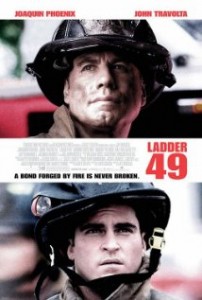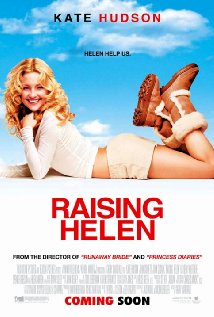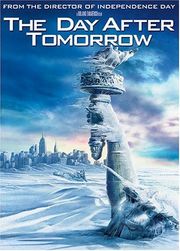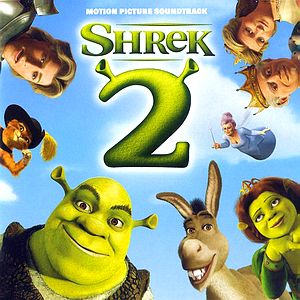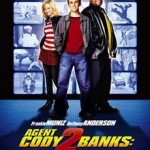Santa Barbara’s spot in the film festival food chain.
Local film geeks are salivating for this year’s film festival, but what about the industry crowd? Exactly what kind of Hollywood buzz is the Santa Barbara International Film Festival generating?
“I think it’s definitely coming into its own,” said producer/manager Andy Cohen, who has been involved in more than 40 films. “Since it’s in Hollywood’s back yard, it feels like a great place to have a film festival. Plus, half of Hollywood lives in Santa Barbara anyway.”
“For people in L.A. it is a must-attend film festival,” said Kim Adelman, who has produced 19 short films that have played at more than 150 film festivals. “At Sundance, people always complain they never get to eat because they’re always rushing from one thing to another. At Santa Barbara you have time to enjoy yourself. … You’re not having to ‘work’ the festival so much … it’s more of an enjoyable experience. Networking happens casually as opposed to maniacally.”
She is a big fan of Santa Barbara.
“These people really love films; it’s not just business for them,” said Adelman, whose book “The Ultimate Filmmaker’s Guide to Short Films” will come out in February. “When one of our filmmakers checked in for the film ’78, they said, ‘Oh I love your film’ and quoted some lines back. Totally made his day.”
In terms of ranking Santa Barbara against other film festivals, Adelman labeled it “very respectable,” similar in stature to the Chicago Film Festival.
“In the U.S. there are what I consider to be three different tiers of film festivals,” said Thomas Ethan Harris, founder of the Los Angeles Independent Film Festival and a film consultant who guided “The Blair Witch Project” along the festival circuit. The top group includes festivals like Sundance, Toronto, Seattle, Telluride and the New York Film Festival.
Top-tier festivals offer exposure for the filmmakers in three different areas. First, they offer the business community. Second, they offer quotable press for the filmmakers.
“The third thing they offer are fantastic public audiences, which are very, very important to actually move a film forward,” Harris said.
The next tier, the community festival circuit, is where Harris puts Santa Barbara.
“I rank it fairly high,” he said, noting it offers very, very good public audiences. “They offer not really quotable press, but regional press … They offer some business community. Santa Barbara does better than most because of where it’s positioned near L.A.”
In general, festivals are on the decline, Harris said. “Financing is drying up. Interest from the business community is drying up. The press has less interest. The one thing that seems to be on the rise … are festivals that take place in a resort town. If the business community (interest) is waning, at least you can get them to come to a beautiful place.”
The film industry itself is seeing a rise of really smart film festivals, of which Santa Barbara is one, Harris said.
“In my eyes, for many years Santa Barbara really tried to look like a mini Sundance. …If it continues to etch out its own personality (in terms of what kind of films it screens), it’s actually in the perfect part of the calendar year with hotels and shops and wonderful restaurants,” Harris said.
“The community film festivals that are going to survive are ones that have a niche and have a really nice atmosphere to offer.”
“These people really love films; it’s not just business for them,” said Adelman, whose book “The Ultimate Filmmaker’s Guide to Short Films” will come out in February. “When one of our filmmakers checked in for the film ’78, they said, ‘Oh I love your film’ and quoted some lines back. Totally made his day.”
In terms of ranking Santa Barbara against other film festivals, Adelman labeled it “very respectable,” similar in stature to the Chicago Film Festival.
“In the U.S. there are what I consider to be three different tiers of film festivals,” said Thomas Ethan Harris, founder of the Los Angeles Independent Film Festival and a film consultant who guided The Blair Witch Project along the festival circuit. The top group includes festivals like Sundance, Toronto, Seattle, Telluride and the New York Film Festival.
Top-tier festivals offer exposure for the filmmakers in three different areas. First, they offer the business community. Second, they offer quotable press for the filmmaker, said Harris.
“The third thing they offer are fantastic public audiences, which are very, very important to actually move a film forward,” Harris said.
The next tier, the community festival circuit, is where Harris puts Santa Barbara.
“I rank it fairly high,” he said, noting it offers very, very good public audiences. “They offer not really quotable press, but regional press … They offer some business community. Santa Barbara does better than most because of where it’s positioned near L.A.”
In general, festivals are on the decline, Harris said. “Financing is drying up. Interest from the business community is drying up. The press has less interest. The one thing that seems to be on the rise … are festivals that take place in a resort town. If the business community (interest) is waning, at least you can get them to come to a beautiful place.”
The film industry itself is seeing a rise of really smart film festivals, of which Santa Barbara is one, Harris said.
“In my eyes, for many years Santa Barbara really tried to look like a mini Sundance. …If it continues to etch out its own personality (in terms of what kind of films it screens), it’s actually in the perfect part of the calendar year with hotels and shops and wonderful restaurants,” Harris said.
“The community film festivals that are going to survive are ones that have a niche and have a really nice atmosphere to offer.”

